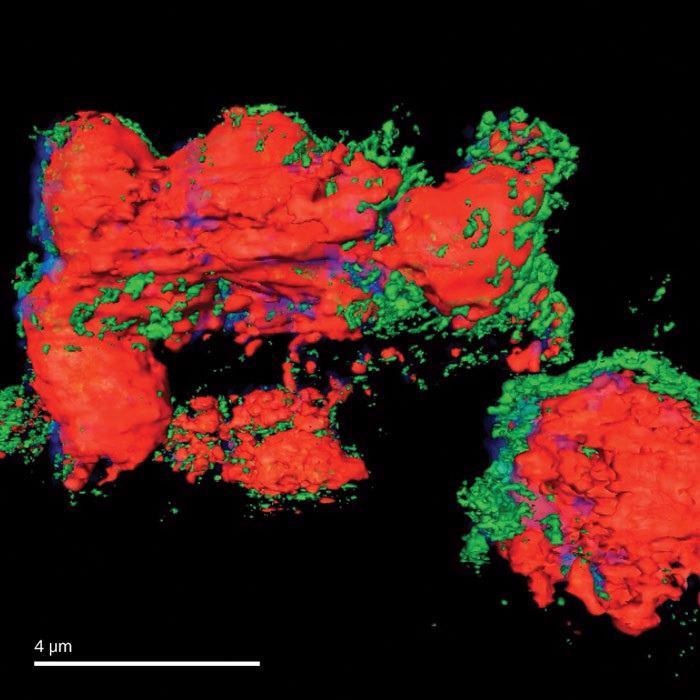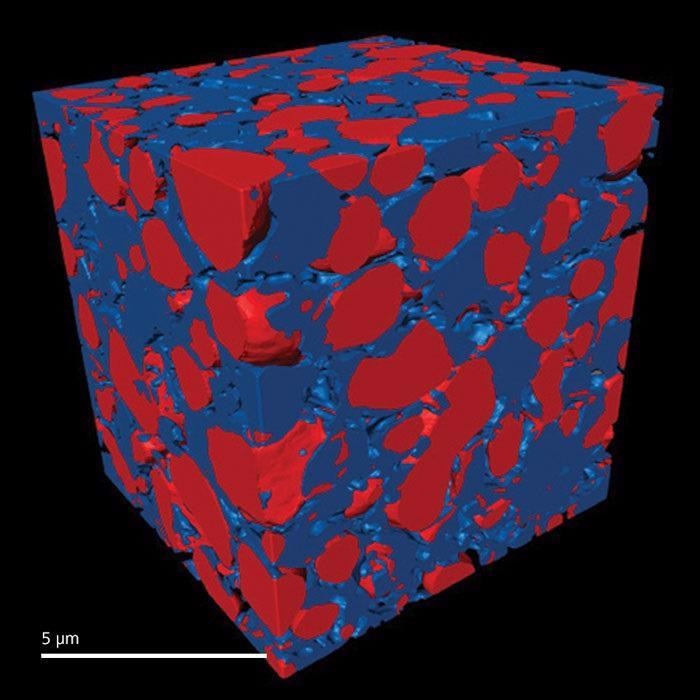Xradia Synchrotron solutions from ZEISS bring nanoscale X-Ray imaging to its synchrotron facility, thereby allowing users to give up expensive and laborious in-house development. The availability of proprietary X-Ray optics and a proven 3D X-Ray microscopy platform impact the ultra-bright and tunable X-Ray beams available at current synchrotron facilities.
Users can obtain quick non-destructive 3D imaging along with resolution <30 nm with a range of contrast modes. The Xradia Synchrotron family consists of 3D imaging microscopes coverage an extensive energy ranging from soft to hard X-Rays.
Highlights
Tomography. Fluorescence. Cryo.
Xradia 800 Synchrotron: Hard X-Ray Nanotomography
3D tomographic imaging with X-Rays offers elaborate volumetric data of internal structures without the requirement for cutting or sectioning at the area of concern. The Xradia 800 Synchrotron functions in the 5 to 11 keV energy range, and it images an extensive range of samples such as fuel cell and battery electrodes, catalysts and soft and hard tissue with a resolution lesser than 30 nm.
Xradia 800 Synchrotron is perfectly adapted for improved methods like XANES spectro-microscopy for 3D chemical mapping and in situ imaging to allow users to study materials under real operating conditions.
Xradia 825 Synchrotron: Soft X-Ray Nanotomography
3D tomographic imaging in the soft X-Ray range, such as the water window ranging up to about 2.5 keV, is best suited for the structural imaging of whole cells and tissue.
Cryogenic sample handling allows users to image in a frozen-hydrated state, thereby reducing the effects of radiation damage while retaining the sample anywhere near that natural state as possible. Additional applications contain chemical state mapping of both organic and inorganic materials and also the imaging of magnetic domains.

Nickel Battery. Image Credit: Carl Zeiss Microscopy GmbH

Solid Oxide Fuel Cell. Image Credit: Carl Zeiss Microscopy GmbH

Virus-infected Ptk2 Cell. Image Credit: Carl Zeiss Microscopy GmbH
Benefits
With the help of proven synchrotron platforms from ZEISS, users can invest their time and energy into research instead of costly and laborious in-house development.
Users can select the system that best suits their research requirements on proven 3D X-Ray microscopy platforms.
Xradia 800 Synchrotron: Hard X-Ray Nanotomography
- Users can experience flexibility for improved methods and image an extensive range of samples in situ to comprehend the impact of real operating conditions with matchless throughput and image quality
- Map oxidation state in electrochemical devices or catalysts with the help of XANES spectroscopy
- Users can take advantage of the non-destructive 3D tomographic imaging <30 nm resolution for elaborate volumetric data without the requirement for cutting or sectioning at the area concerned
Xradia 825 Synchrotron: Soft X-Ray Nanotomography
- Utilize the “water window” energy range to image organic materials in their natural and wet surrounding with high contrast
- Image the structure of whole cells and tissue, using cryogenic sample handling to reduce the impacts of radiation damage
- Users can connect to optical fluorescence microscopy for improved imaging of structure and function
Applications
ZEISS Xradia Synchroton Family
Source: Carl Zeiss Microscopy GmbH
| |
Xradia 800 Synchrotron |
Xradia 825 Synchrotron |
| Materials Science |
Monitor battery electrode particles in operando during the charge-discharge cycle. Perform chemical imaging of catalyst particles in situ. Analyze SOFC nanostructure in situ at operating temperature. |
Perform chemical imaging of polymers by spectro-microscopy. |
| Life Sciences |
Study toxicity of nanoparticles in cells and tissue. Image and quantify the nanostructure of bone. |
Visualize ultrastructure in whole, unsectioned cells in the frozen hydrated state. Correlate X-Ray and optical fluorescence microscopy for combined structural and functional imaging. |
| Natural Resources, Geo- and Environmental Sciences |
Visualize morphology of iron melt at Earth’s lower mantle conditions. Study microstructure of soil particles relevant to water retention. |
Study micro-organisms in wet environments. |
| Electronics |
Image integrated circuits to find malicious modifications. |
Image magnetic domains on the nanoscale. |